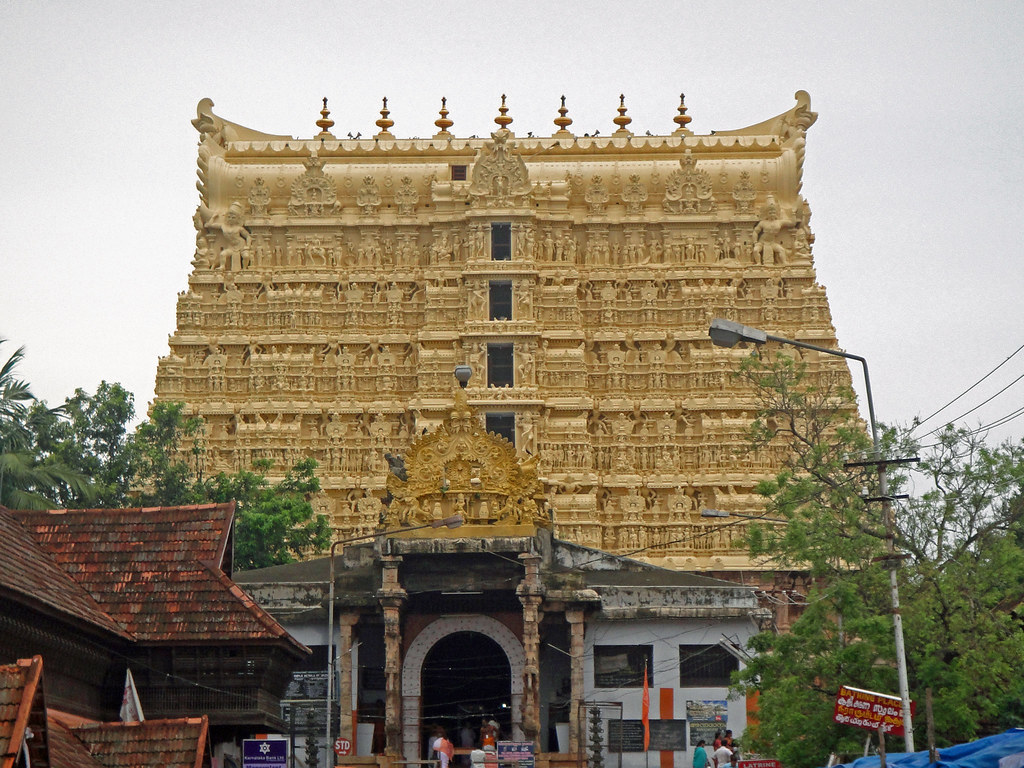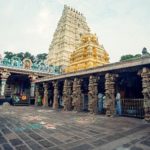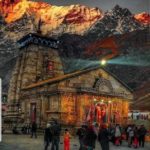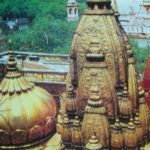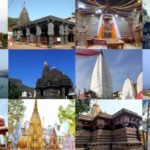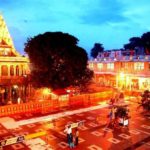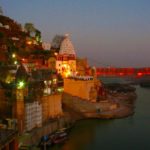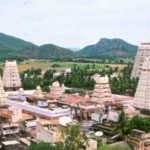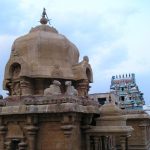The Padmanabhaswamy Temple, Trivandrum is a must-visit temple in the southern state of Kerala. This temple has Padmanabhaswamy, the prone form of Lord Vishnu called Anantha Sayanam. In this form, the Lord is in eternal sleep on the divine serpent Nagashesha. The very name of the city or Trivandrum or Thiruvananthapuram means the city of the Lord Ananta. The temple is unique in its fusion of the architecture of the Chera as well as the Dravidian style of architecture. The deity is the tutelary deity of the royal family of Travancore.
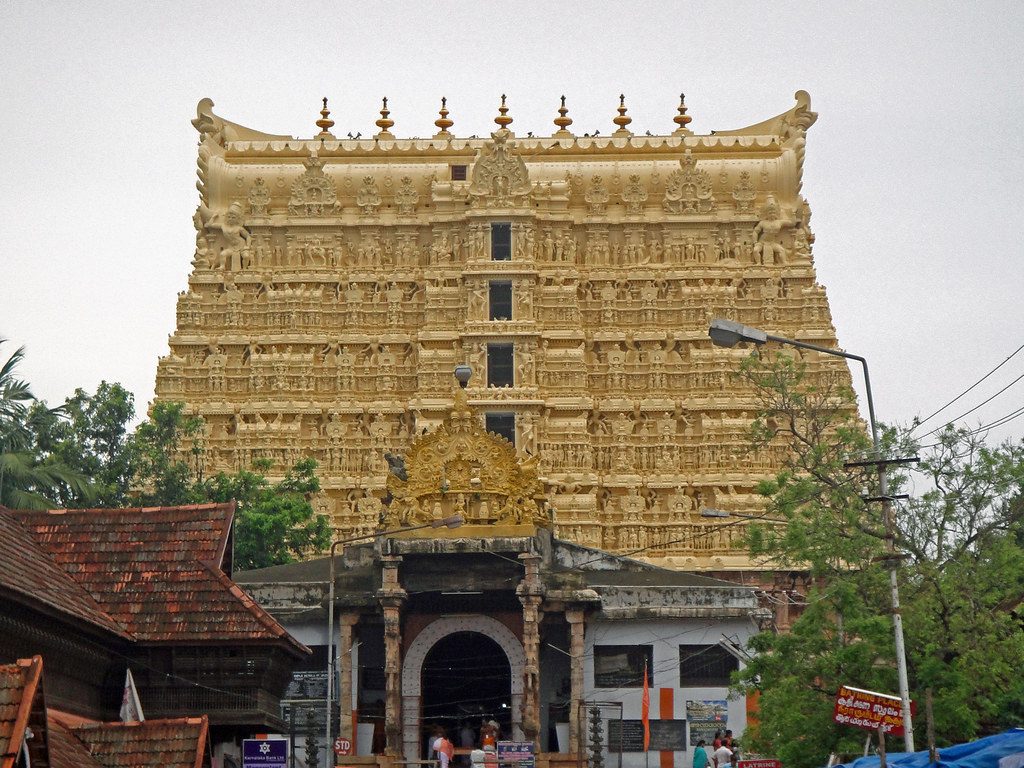
The Padmanabhaswamy Temple Gopuram
History
Very early texts such as the Puranas and the Mahabharata mention the temple. Sangam literature dating back to 500 BCE and 300 CE also refers to the temple. The older texts call the Padmanabhaswamy Temple the Golden Temple. The texts describe it as a temple with gold walls. It finds mention in the names of the 108 Divya Desams or holy abodes. The poet Namalavar sang the glories of the deity Padmanabha in the 8th century. The original Moolastahanam of Padmanabhasamy is in the Ananathapuram Temple in Kasargod.
Temple Records
The temple has had its own record room since 1425 AD. These records are in the form of leaf records that are in old Tamil and Malayalam scripts. The records are now in the temple and with the Archives Department of the government. These documents are of two types. One set of records were those of the temple council while the second set related to the daily functioning of the temple.
Legends – The Naughty Little Boy
The legend of the temple tells the story of a saint Vilvamangalathu Swamiyar. Swamaiyar lived in Kasargod near the Ananthapuram Temple. He prayed for Lord Vishnu to appear before him and give him Darshan. The Lord did appear to him as a very mischievous little boy who desecrated the idol that Swamiyar had kept for Pooja. This made Swamiyar very angry and he chased the boy who then vanished in front of him. He realised that the boy was none other than the deity whose Darshan he was longing for. Swamiyar wept and prayed for another Darshan of the Lord. He heard a voice telling him to go to the Ananthavana or the endless forest and see him.
Ananathavana
So, Swamiyar set off to look for the Ananathavana. When he was near the Laccadive Sea he heard a Pulaya woman grumbling at her child that she would send him to the Ananathakadavu. The word Ananthakadavu means the same as Ananthavana. Swamiyar enquired about where the palace was and then made his way there. When he did reach his destination he saw the little boy who then vanished into an Ilupa tree. This tree suddenly fell and turned into the Anantha Sayanam form of Lord Vishnu. It was so huge that it spanned a distance of eight miles in length.
The Temple
Swamiyar then requested the Lord to shrink to a size that would be thrice the length of the staff that he held. The Lord shrank into the present size of the deity at the Padnabhaswamy temple. Since there were Ilupa trees there he could only see the form of the Lord in three sections; Thirumukham, Thiruvudal and the Thirupadam. The Sage prayed for forgiveness from the Lord and offered him rice Kanji with salted mango that he had got from the Pulaya woman. With the help of the King of the land (Koopakkara Potti and Karuva Potti) and a few Brahmins, the temple was built.
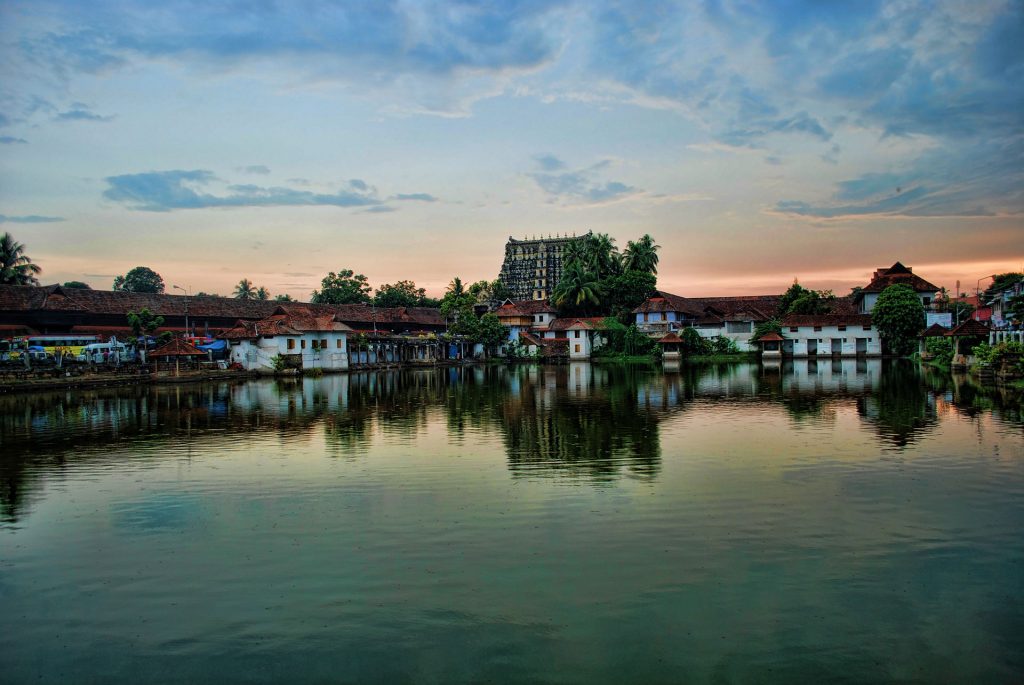
The Padmanabhaswamy Temple
The Invaders
In 1680 AD a Muslim invader destroyed the Budhapuram Bhaktadasa Perumal Temple and planned to attack and destroy the Padmanabhaswamy Temple and loot it. The local Pathans discouraged him. However, another person attempted to loot the temple by sending his mercenaries. When they tried to approach the temple they saw hundreds of divine serpents and ran away.
Interesting Facts About The Temple
- Unlike most other temples in the state of Kerala, this temple is a fusion of the Dravidian style with the local style of building temples.
- The Ananthankadu Nagaraja Temple is on the north-west of the Padmanabhaswamy Temple. Swamiyar’s Samadhi is on the western side of the temple and has a Krishna temple built over it.
- In the early half of the 18th century, Anizham Thirunal Marthanda Varma became the king at the age of 23. He suppressed all the internal issues that were present and centralised the administration of the kingdom. He initiated the last major renovation of the temple and the reconsecration of the deity was in 906 ME (1731 CE). Then in 1750, Anizham Thirunal gave the kingdom to the Lord Padmanabhaswamy and declared that he and all his descendants would be the vassals of the Lord.
- The deity is covered in an Ayurvedic mixture called Katusarkara Yogam.
- Entry to this temple is only for those who are Hindus, in traditional Indian clothing.
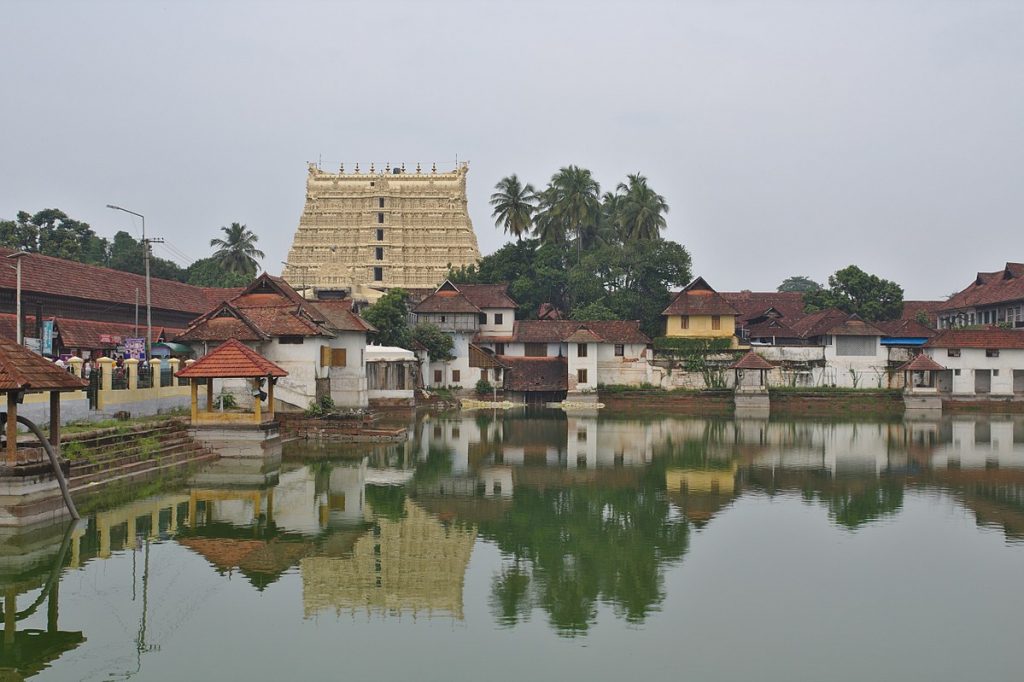
The Padmanabhaswamy Temple, Trivandrum
The Deities
The deity in the temple is the Ananthasayanam form of Lord Vishnu. In this form, he is reclining in sleep on the divine serpent Anathasesha or Adisesha. His right hand is over a Shiva Lingam, and Brahma is in a lotus that comes out of the Lord’s navel. The consorts of Vishnu; Lakshmi and Bhudevi are also by his side. 12,008 Saligramam stones from the Gandaki river in Nepal form the deity.
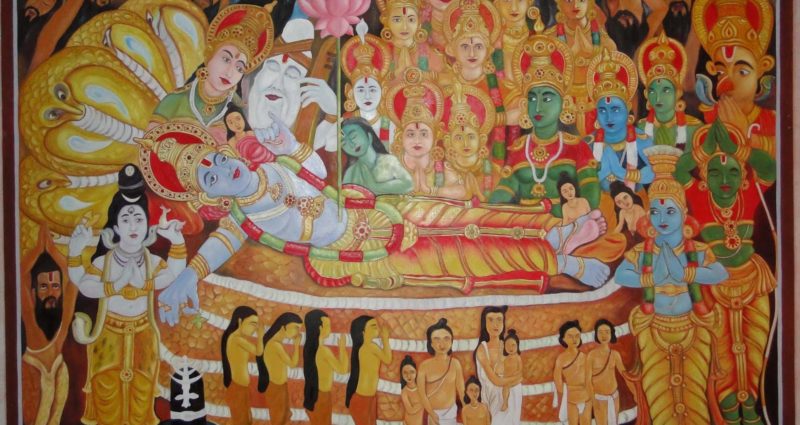
Othakalmandapam
The platform in front of the deity is called the Othakalmandapam since it is made of one single slab of stone. Anyone who prostrates before the deity on this platform is said to have given up everything to the Lord. Since the King was the one who did that, only the ruler is permitted to prostrate on this stone slab.
A devotee visiting the temple has to climb to this stone platform to view the deity. The deity can be seen in three parts. The first door gives a view of the Lord and the Shiv Linga. The second door allows a view of Sri Devi, Sage Bhrigu, Brahma, the golden Abisheka statues as well as the Utsava Murthy. We can see the Lord’s feet, Bhudevi and Markendaya Muni through the third door. The sanctum also has the idols of two goddesses, Narada, Garuda, Tumburu, and the weapons of Lord Vishnu.
Other Deities
The temple houses the shrines, Thekkedom and Thiruvambadi for Ugra Narasimha and Krishna Swami. The story of the Krishna Swami idol also dates back many centuries. The Vrsihni Kshatriyas carried the idols of Krishna and Balarama and travelled South. They reached the land of Padmanabha and gave the Balarama idol to Neythasseri Potti who installed it at Budhapuram near Kanyakumari. The Krishna idol was installed within the Padmanabhaswamy Temple. It has its own Bali stones, Namaskara Mandapam and flag mast. Krishna is in the form of the charioteer of Arjuna in this temple. The idol has one hand holding a whip. The deity is dressed as Mohini on Ekadashi days. The temple also has shrines for Rama, Sita, Lakshman and Hanuman, Lord Ganesha, Sata, Vishwaksena, and the Keshetrapala.
Festivals And Rituals
The main festivals of the temple are bi-annual. The two major festivals are the Alpashy festival October/November and the Panguni festival in March/April. The festivals are 10 days long. On the ninth day of the festival, the Pallivetta procession is taken out. The festivals end with the Aarat or holy bath procession to the Shankumugham Beach. The Maharaja of Travancore escorts the processions. The Utsava Vigrahas idols are used for these processions. After the bath in the ocean, they are then taken back to the temple.
During the Navaratri festival the idols of Goddess Saraswathi, Mun Uditha Nangai and also Kumaraswamy (Lord Murugan) are taken in a procession. A music festival is also held at this time. Once in six years the Laksha Deepam (or one lakh lamps) festival is held. The festival features the lighting of one lakh lamps at the same time in the temple premises. The last Laksha Deepam festival was in 2020.
Wealth Of The Temple
The temple has been referred to as the Golden Temple even in the old records which implies that the temple was also very wealthy even in olden times. Padmanabhaswamy temple had hit the headlines because of litigation and investigation as to the ownership and control of the temple’s assets, which the royal family won. The temple has six vaults for storage of temple treasures. Two of the six vaults were opened and investigated, revealing that the temple holds priceless artefacts of gold and also precious stones. It is estimated that the temple is probably the richest place of worship in the world. No one really knows as the remaining vaults stay unopened, as per the wishes of the royal family. According to the royal family, opening the vaults will bring calamities to the city and the state.
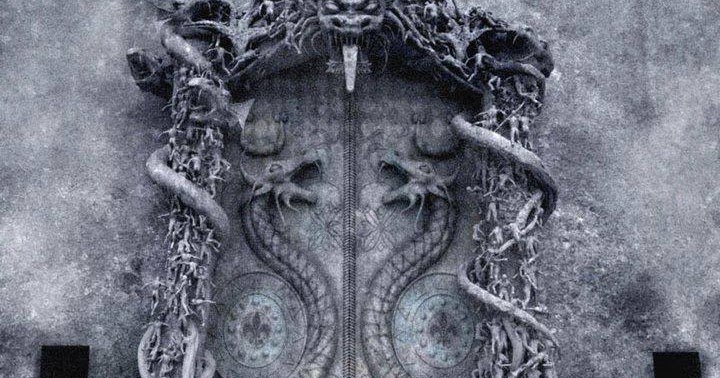
Travel And Accommodation
The temple is very easy to visit since it is in the major city of Thiruvananthapuram. It is in the heart of the city and is easily accessible. The Railway station is a 10-minute walk away from the temple. Accommodation is available readily in the city. The temple also offers guest accommodation. There is a palace that has been converted to a museum right next to the temple. Entry to the temple is only for Hindus. Women are only allowed to enter in sarees or Pavadas. Men should enter only with either a Mundu or Dhoti and bare chest.




